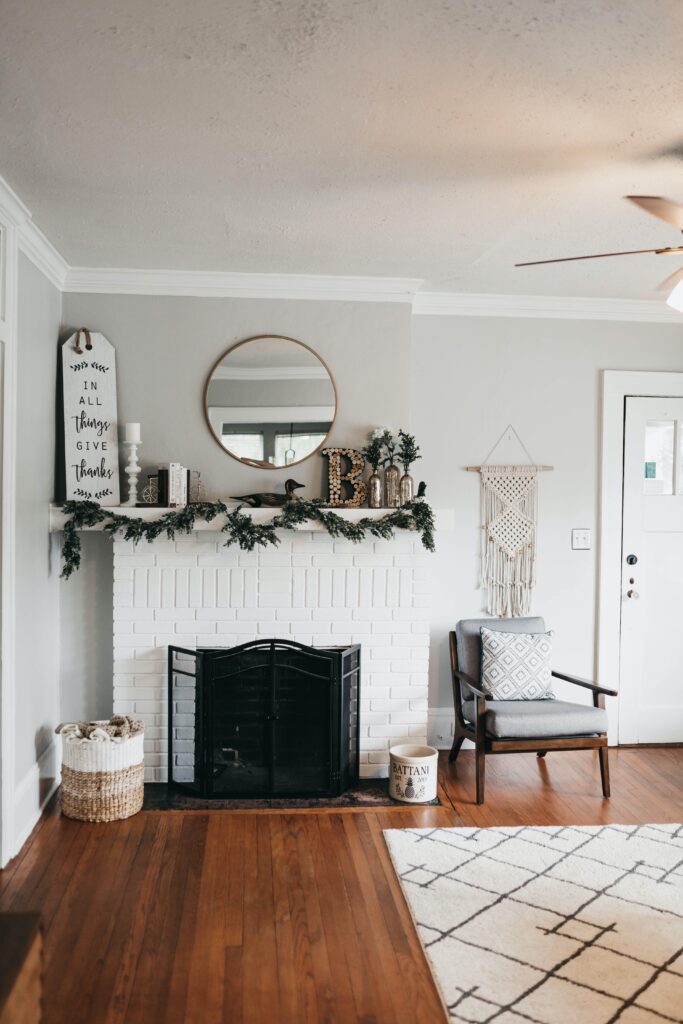Installing an indoor fireplace can be a great way to add warmth and ambiance to your home. A fireplace provides heat during the cold winter and adds a cozy atmosphere perfect for spending time with family and friends. However, hiring a fireplace installer can be expensive and time-consuming. Many people are turning to DIY methods to install their indoor fireplaces. Not only is it cost-effective, but it also gives you the satisfaction of saying, “I did it myself.” This article will discuss how to install your indoor fireplace DIY style, covering everything from choosing the right type of fireplace for your home to safely installing and maintaining it.

Choosing the correct fireplace
The first step in installing an indoor fireplace is choosing the right type for your home. There are three main types of fireplaces: wood-burning, gas, and electric. Each type has its benefits and considerations. Wood-burning fireplaces provide a traditional feel and authentic crackling sound but require regular maintenance and have high installation costs. On the other hand, gas fireplaces offer convenience as they don’t require chopping or storing wood. However, they can be expensive to install and operate. Electric fireplaces are the most cost-effective option and can be easily installed by DIY enthusiasts. They also come in various designs, making them a versatile choice for any home.
Researching and understanding each type’s features and costs is essential before deciding. Consider factors such as your budget, the availability of fuel, and whether you want a fireplace that only provides heat or serves as a decorative piece.
Gathering the necessary materials
Once you have chosen the type of fireplace, it is time to gather all the necessary materials for installation. The most crucial are flue pipes, chimney caps, hearth extensions, mortar or caulk, and a fire screen. Flue pipes are essential as they carry smoke away from your home and maintain proper airflow for efficient burning. Chimney caps prevent debris and animals from entering the flue pipes and causing damage. A hearth extension is necessary if you have a wood-burning fireplace to comply with fire safety codes. Mortar or caulk is used for sealing gaps between the fireplace and chimney. A fire screen helps prevent sparks from escaping the fireplace.
Make sure to purchase high-quality materials that meet safety standards. It is also essential to measure the height and width of your fireplace before buying the flue pipes and chimney cap to ensure a proper fit.
Installing the fireplace
Once you have all the necessary materials, it is time to start installing your indoor fireplace. If you use an electric fireplace, plug it in and follow the manufacturer’s instructions. For wood-burning and gas fireplaces, consult the installation manual provided by the manufacturer. The process may involve cutting a hole in your ceiling or wall to install the flue pipes and connecting them to the fireplace. Following safety precautions and using proper tools when handling hot or sharp materials is crucial.
If you are not confident installing the fireplace yourself, it is best to hire a professional. A poorly installed fireplace can be a safety hazard and may not function correctly, leading to higher costs in the long run.
It is also essential to consider the location of your fireplace. It should be three feet away from combustible materials, such as furniture or curtains. If installing a wood-burning fireplace, ensure it has a non-combustible hearth extension.
Testing and maintenance
After installation, it is essential to test your fireplace to ensure everything functions correctly. If you have a wood-burning fireplace, ensure the chimney cap and flue pipes are clean and debris-free. For gas fireplaces, check the pilot light and gas connections. Test the thermostat for electric fireplaces.
Regular maintenance is crucial in keeping your indoor fireplace in good condition. Regularly cleaning the fireplace and chimney prevents the buildup of harmful gases such as carbon monoxide. Inspect and clean flue pipes, chimney caps, and other components at least once a year.
Following manufacturer-recommended maintenance practices and immediately replacing faulty components is essential to ensure safe and efficient operation. You can also hire professionals to clean and inspect your fireplace annually.
Safety precautions
Fireplaces can be dangerous if not handled properly. It is crucial to take safety precautions seriously when installing and using your indoor fireplace. Some essential safety measures include installing a carbon monoxide detector, keeping flammable materials away from the fireplace, and never leaving the fire unattended.
It is also crucial to understand how to use your fireplace correctly. For example, open the flue damper before starting a fire when using a wood-burning fireplace. Never use gasoline or other flammable liquids to start a fire; always safely dispose of ashes.
Enjoying your new indoor fireplace
After all the hard work, it is time to sit back and enjoy your newly installed indoor fireplace. Invite friends and family for a movie or game night by the fire. Not only will you save on heating costs during the winter months, but you will also create beautiful memories with your loved ones.
Remember to continue proper maintenance and safety practices to ensure your fireplace stays in good condition for years. With proper care, your DIY fireplace will provide warmth and comfort for many winters ahead.